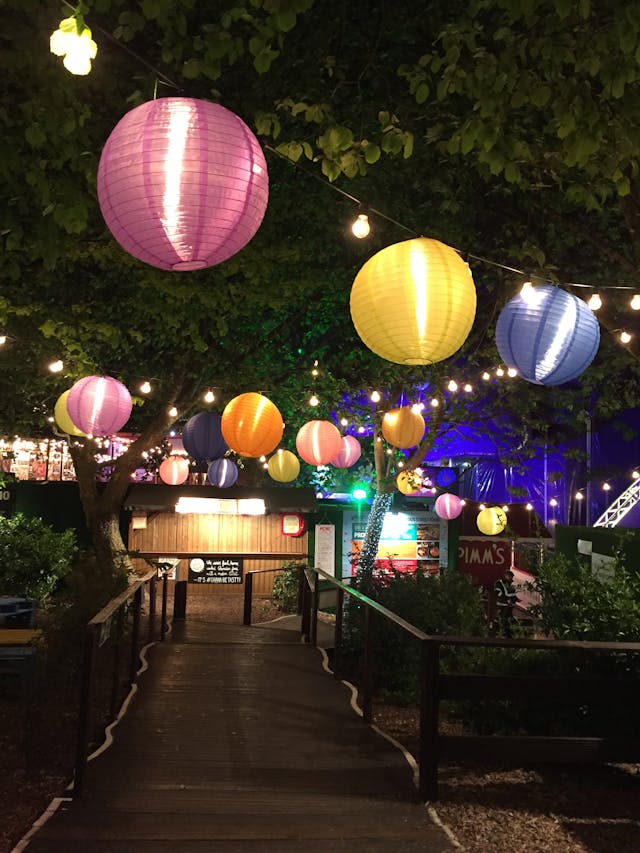Your yard will take on a new dimension with moon gardens. Moon gardens are best created at night, and there are plenty of reasons to do so. Maybe that’s when you love to have guests or you have more time to appreciate your outside area. Perhaps you are looking for a spot where you can spend time in nature, perhaps in a moonlit garden. Learn from professional designers how to maximize the potential of a moon garden.
Moon gardens: what are they?
Although there are some similarities, moon gardens are different from planting according to the phases of the moon since they are designed to be seen and celebrated. To enjoy a moon garden at night is the most popular motivation for creating one.
Moon gardens are often created using surfaces and plants that reflect light to interact with the shifting light in the natural world. In order to heighten the mood and improve the sensory experience, they could also use texture, aroma, and lighting.
As stated by award-winning landscape designer and author of the well-known garden design book Gardentopia: Design Basics for Creating Beautiful Outdoor Spaces Jan Johnsen, “They are often a landscape filled with white, silver, or gray plants and are meant to reflect the moon’s luminous glow when near full.”

They “are bathed with heavenly lunar light and are particularly lovely in a warm summer evening,” she continues, when that occurs. “When the moon seems to make everything glow, it creates almost a mystical setting.”
The Reasons for Establishing a Moon Garden
Making the most of the evening light lets you spend longer time in the garden and enhances the appeal of streetscapes. These may go by the names “moon gardens,” “white gardens,” or “night/evening gardens,” but they are nothing but glamor because of the way light and dark are combined.
According to Johnsen, “moon gardens extend our enjoyment of the outdoors into the evenings.”
Attracting pollinators that are active at night is another advantage of moon gardens. Moon gardens are one of the hottest outdoor living trends this year, according to Garden Media Group president Katie Dubow, who cites soaring Google searches. Using aromatic and night-blooming plants, this new generation of moon garden growers is introducing a novel twist in the hopes of drawing in nighttime pollinators like bats and moths.
Some Ideas for Moon Garden Design
Prioritize safety first.
As with any well-designed environment, start with the functional requirements. Consider who and how the area will be used.
According to ecological designer Jessi Bloom, who is located in Seattle, Washington, “you have to consider lighting and safety while people are walking.” She signals people to pay attention using plants with light-colored or variegated leaves at key intersections.
Particular care should be paid to elements including open water, slope changes, and steep stairs that need railings. Uneven walkways with gravel or mulch might be dangerous for aging ankles or those wearing heels.
Choose the appropriate hues and plants.
Select a color scheme and the emotion you like to convey. Moon gardens may be any color; white gardens, such as the well-known Sissinghurst in England designed by Vita Sackville-West, are particularly beautiful at night. But in your existing lighting, the plants and fittings must be bright enough to be seen.
Though silver, pastel blue, lavender, lime, chartreuse, yellow, and apricot all sparkle in moon gardens, a tapestry of greens and white is calming and beautiful. At twilight, deep-toned flora and accents could go away. For instance, according to Johnsen, purple and red may both read as black in the shadows.
Include ornamental details.
Use light-colored lanterns, chairs, benches, and pots as ornamental touches to carry over your color scheme.
Southern Living Plant Collection representative and garden designer Linda Vater suggests approaching the structure of your plants from a holistic perspective.
The garden gains depth and intrigue via the layering of different materials and heights. According to Vater, well placed evergreens with silvery or light-colored leaf may frame striking vistas of the night sky and reflect moonlight.
Pay attention to pollinators and scent.
Add aromatic flowers to your environment to enhance the nighttime sensory experience. Selecting aromatic flowers that bloom throughout the night can help to attract and maintain vital nocturnal pollinators. We are only now starting to realize how significant nocturnal pollinators are as a group within the larger pollinator community.
Some aromatic flowers have adapted to bloom only at night, which lessens the competition for pollinators such as bees, bats, nocturnal moths, and beetles. For easy visibility, they are often white or light in color. As the sun sets, their scent usually becomes stronger, enticing their customers and filling night gardens with aromas.

Among the aromatic plants that bloom at night are annual moonflowers, evening primrose, night-blooming jasmine (Cestrum nocturnum), and night-blooming cereus (Epiphyllum oxypetalum).
The National Wildlife Federation’s Mary Phillips, director of Native Plant Habitat Strategy & Certifications, advises growing native plants including asters, wild bergamot, purple coneflower, and penstemon that are beneficial to the local moth population. In the West, where bats feed on nectar, try agave, yucca, and evening primrose; in the East, grow bee balm, since bats eat insects.

Include well-placed lighting.
In a moon garden, well chosen lighting may be a very useful tool. Phillips advises against using artificial lights in the yard after dark since they may damage nocturnal insects.
Bloom advises switching to candles, timers, or lower-voltage lighting.
Bloom also likes to highlight important elements using lighting, such as unique plants, water features, gates, or artwork.
“Pacific Fire” vine maple is one of my favorite trees. It’s amazing at night with a little uplight, according to Bloom. “And last, just for fun, a circular moon gate gently emphasizes the purpose of your garden.”



